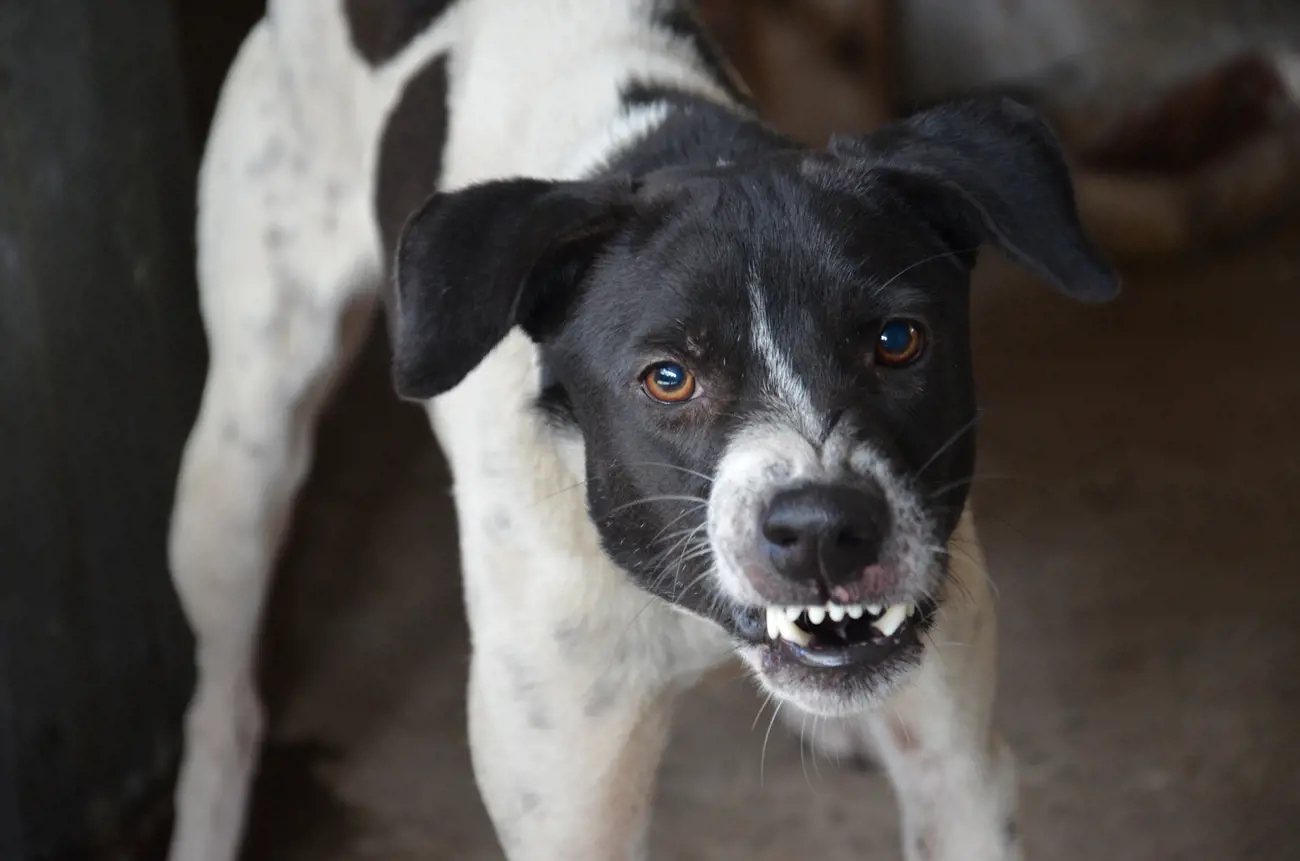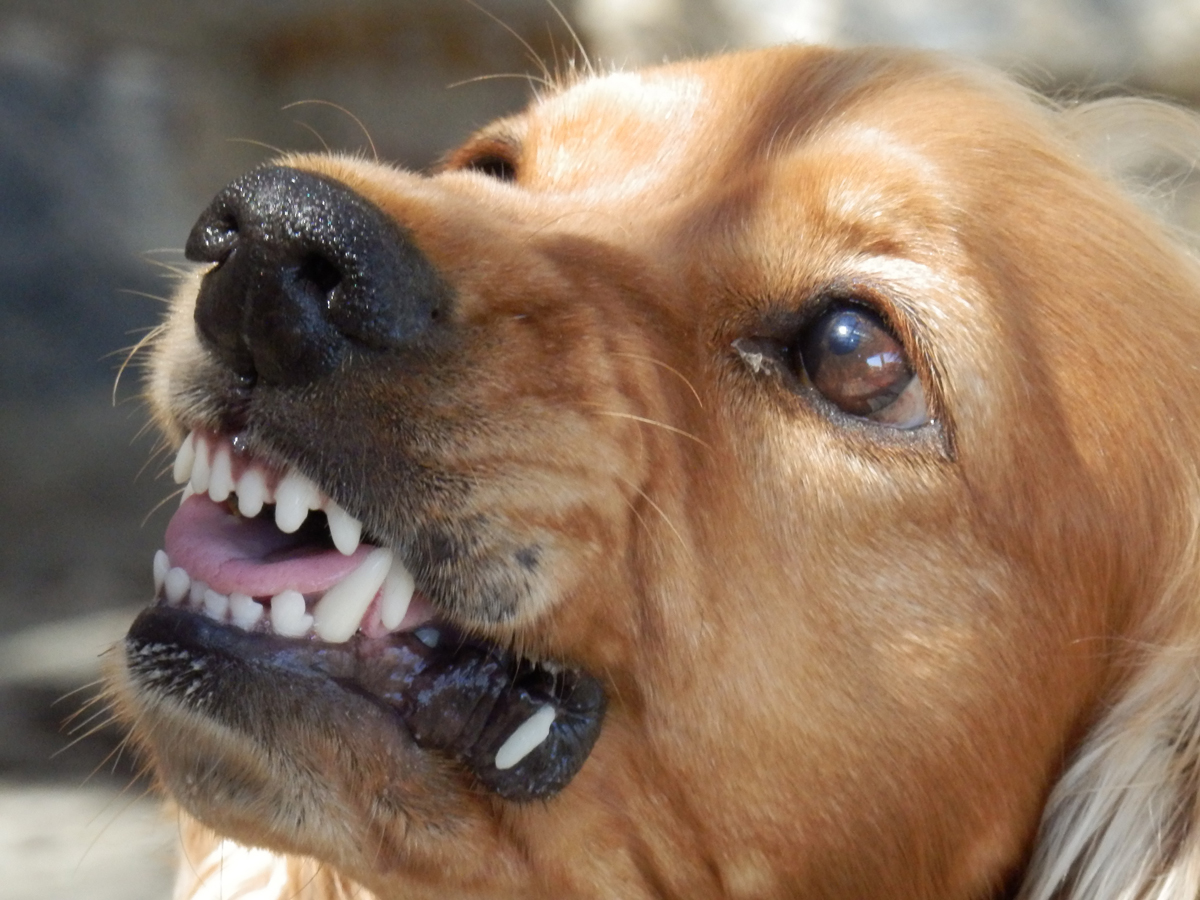How to calm down an angry dog
19th January, 2021

A dog’s ears are pinned back, their eyes are glaring at you, they might even be snarling and showing their teeth. The dog has got so angry you’re scared they could even bite you. What can you do?
Sometimes, even the calmest dog can get angry and upset. Whether from illness, injury, fear, jealousy or frustration, dogs – like their human owners – can sometimes get angry even with those closest to them.
Here at Purely Pets, we know the time and effort you put into your four-legged friends and how upsetting anger can be for you both. That’s why we’ve put together this quick guide on how to calm down an angry dog.
However, just as with finding insurance for your dog, every situation is different and there’s no one-size-fits-all solution in these tricky situations.
How to spot when your dog is getting angry
Despite the many thousands of years we’ve spent together, communication between dogs and humans isn’t always plain sailing. Despite what we may think, we can’t read each other’s minds!
While we often use our voice to communicate, a dog tends to use its whole body. So, understanding your dog’s body language is vital if you want to spot the warning signs that your dog is becoming angry.
-
Yawning, blinking, lip licking – An early sign a dog might be feeling uncomfortable.
-
Turning head or body away and avoiding your eyes – An unhappy dog.
-
Walking away – The dog is trying to remove themselves from a situation that’s causing them distress. They want to be left alone and need a time-out.
-
Creeping, ears back, tail tucked under – They may be feeling anxious or afraid and are trying to demonstrate submission. This is a middle ground between when the dog is trying to appease you and when it might turn to anger and aggression.
-
Lying down with one leg up – Even more submissive. They’re worried and trying to let you know they aren’t out to hurt you.
-
Stiffening up, staring, raised fur – The dog is feeling very threatened and is beginning to show signs of aggression.
-
Growling and showing teeth – The most direct way of showing they are uncomfortable and may bite.
-
Snapping – Usually in the air in the direction of the perceived threat. The final warning before a serious bite incident occurs.

Tips to calm an angry dog
Despite our best intentions, we might have missed early warning signs of distress and the dog has become angry. In this case, do the following:
-
Stop. Dogs don’t get angry for no reason. It could be that something you were doing has provoked the response.
-
Keep calm. Dogs are very sensitive to our feelings and if they perceive distress, anger or fear then that might provoke an escalation in their behaviour.
-
Speak softly. A soft yet confident voice will send the message that you are still in control.
-
Move slowly, smoothly and calmly. You don’t want to provoke the dog further by appearing threatening.
-
Don’t stare at the dog or stand over it. Without meaning to, you may appear confrontational to an angry dog.
-
Distract. Use the dog's name to keep its attention and give it a clear instruction rather than confusing it with several orders.
-
Back away slowly. If the dog has become aggressive and is not calming down then back away slowly and calmly. Don’t run away or turn your back on the dog as this might cause the dog to chase you.
-
Give them time to calm down. Don’t rush, if a dog has become upset you’ll need to be patient.
The RSPCA has produced valuable guidance on dog aggression.
The charity recommends that with any behaviour problem involving aggression it’s important to have your dog checked by a veterinary professional – as illness or injury is a common cause of anger.
By having dog insurance in place from an early age you can act immediately on any concerns without fear of an unforeseen vet’s bill.
How to treat a dog bite
If your dog’s anger has got out of control, you could suffer a nasty bite. The first concern in most bite injuries is the risk of infection. So, acting fast in seeking treatment for a dog bite is vital!
If a dog bites you, the NHS recommends you take these steps straight away:
-
Clean the wound by running warm tap water over it for a couple of minutes – even if the skin appears unbroken.
-
Remove any objects from the bite, such as teeth, hair or dirt.
-
If the wound is not bleeding freely then gently squeeze it to encourage slight bleeding.
-
Dry the wound and cover with a clean dressing or plaster.
-
For heavy bleeding, put a clean dressing over the wound and apply pressure.
-
Take painkillers if you're in pain.
-
Seek medical advice, unless the wound is very minor.
-
If a body part is severed, then wash it with tap water, wrap it in clean tissue, and store it in a plastic bag surrounded by ice so it can be transported to hospital.

Dog insurance from Purely Pets
No matter how well we know our canine companions, sometimes an unexpected accident can happen that causes them injury.
In many cases treatment for your precious pup can get expensive. If you have the right dog insurance cover in place then you’ll be able to protect yourself from this financial worry and focus on their recovery.
The caring team of insurance specialists at Purely Pets have designed 15 levels of lifetime cover, including cover for vets’ fees ranging from £1,000 to £15,000.
As well as our award-winning policies and low excess from as little as £60, you’ll also have access to the online policy management portal so you can manage your cover at a time that suits you.
In addition, all policyholders have access to the Purely Pets 24-Hour Vet Helpline, that provides round-the-clock advice from a team of veterinary professionals.
Get a quote fand insure your dog with Purely Pets today.
Policy benefits, features and discounts offered may very between insurance schemes or cover selected and are subject to underwriting criteria. Information contained within this article is accurate at the time of publishing but may be subject to change.
Helpful Pages
Recent Posts
Pet Insurance Quote
- 98% claims paid *
- Claims paid directly to vets
- 24/7 vet video consultations
- Interest free monthly payments




